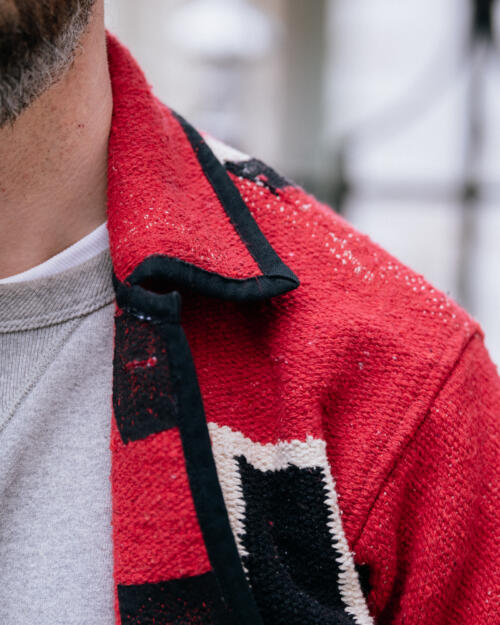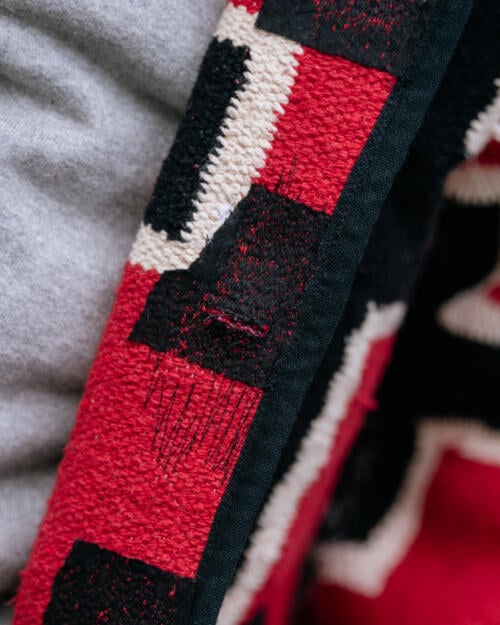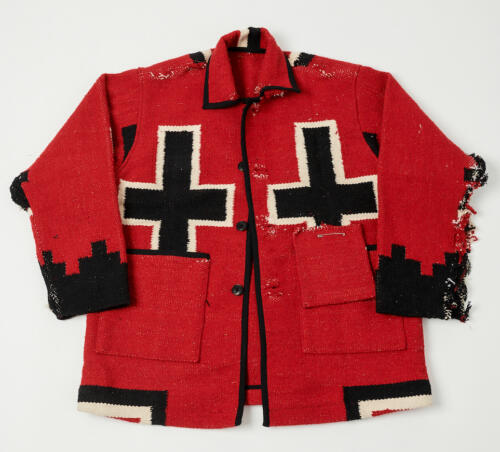
This coat has a good story behind it, and is a nice one for Dry January I think, as it shows different ways clothes can be remade, repurposed and repaired.
I bought it at the workwear-oriented shop Jinji in Paris. It had been made by them under their in-house label, some of which re-used materials to make new garments, usually in Japan. This particular piece used an old Navajo rug, hence the distinctive double cross.
I actually found an old illustration featuring a similar rug, below: a cartoon mocking the kind of rich American that used to buy textiles like these at local trading posts.
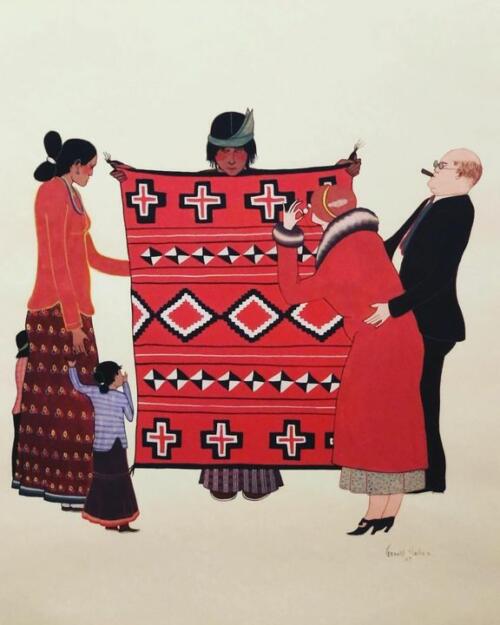
Jinji had had the coat in their shop for a while, sitting on a mannequin. The rug had proved too thick for the construction and had eventually ripped in various places, including under the sleeves, in the collar and around the buttons. It wasn’t really for sale.
I loved it though, and was pretty sure I could repair it. So I asked to buy it and ended up taking it away that afternoon with a little trepidation, unsure how it would work out.
My first port of call was the tailor Fred Nieddu, as I knew he’d appreciate the piece and might know someone who could help. He put me onto David Claxton, who repairs denim as well as making his own.
The repair work I’m highlighting here is all David’s work, though Fred also helped with some functional points, such as lowering the hip pockets to make them more usable, and doing the same with an internal breast pocket.
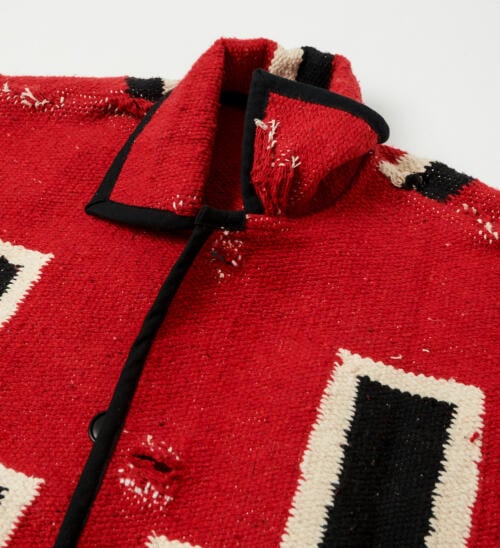
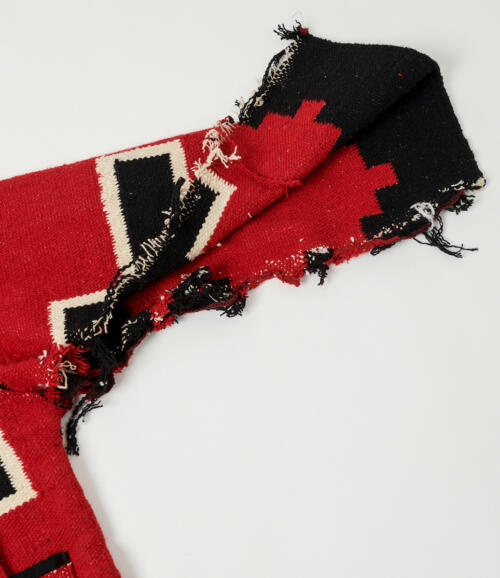
Above you can see the state the coat was in originally. Although the cotton yarn is very coarse, being a rug it’s quite loosely set, which means it has pulled apart at the stress points: seams, edges, button holes.
David told me he was initially unsure it could be repaired at all, because the seams were so far gone. The only solution might have been to cut down the material, under the arms for example, and sew new seams. But then the sleeve might have become too narrow.
However, he eventually decided to try putting pieces of black denim underneath, and stitching the existing material on top of that. This is the same method you’d use on a big rip in a pair of jeans, putting new material underneath and then darning over the top.
Below you can see in the inside and outside of the finished sleeve.
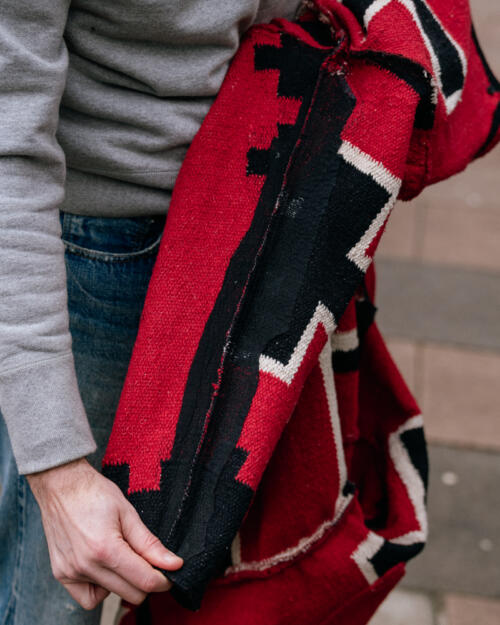
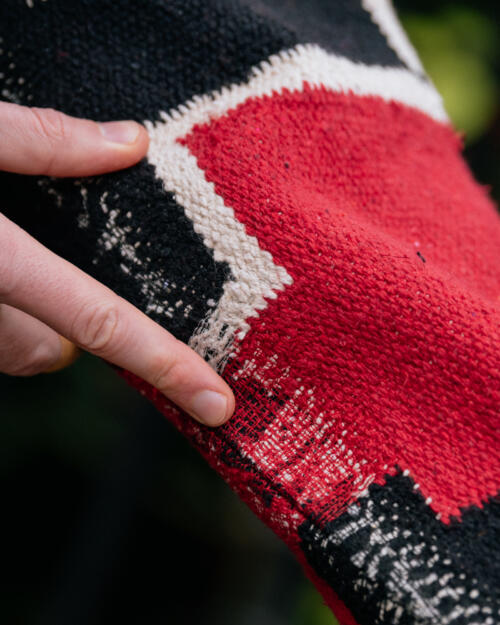
Repairing jeans like this is how David started out, at Levi’s bespoke under Lizzie Radcliffe. He usually uses denim, but also sometimes something softer like linen.
“A challenge is always matching the yarn to the denim, because the yarn won’t be the same kind of indigo dye that the jeans are made of – you have to anticipate how the denim and the yarn itself will fade,” he says.
With my jacket, David used a mix of red and black yarn, echoing the material. The white you can see along the seams is part of the original weave, which just became more prominent as the material pulled apart.
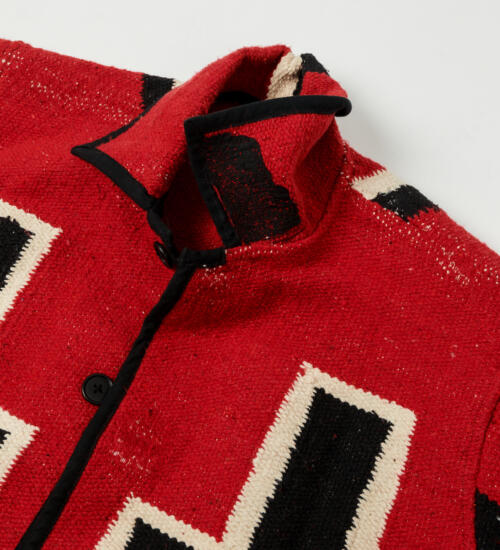
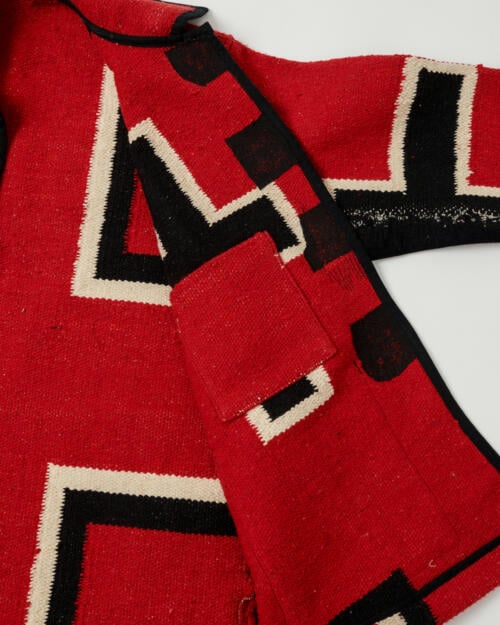
With denim, a specialised darning machine is often used with a cylinder to you sew onto. I’ve seen these before and they’re pretty cool – the material isn’t drawn through like on a regular sewing machine, so the sewer can move the material in any pattern they want. The cylinder is there to help slide material onto, such as the leg of a pair of jeans.
“I didn’t use that with this jacket, because the material was too heavy,” says David. “I was afraid the weight of it would pull the two sides apart and make the seams uneven.
He did use one similar method though. “The key to repairs like this is to spread out the density of the stitching,” he says. “You need a lot of strength around the break point, or the hole, but if you use that same density everywhere the material will become too stiff. So you reduce the density as you radiate out, to create flexibility.”
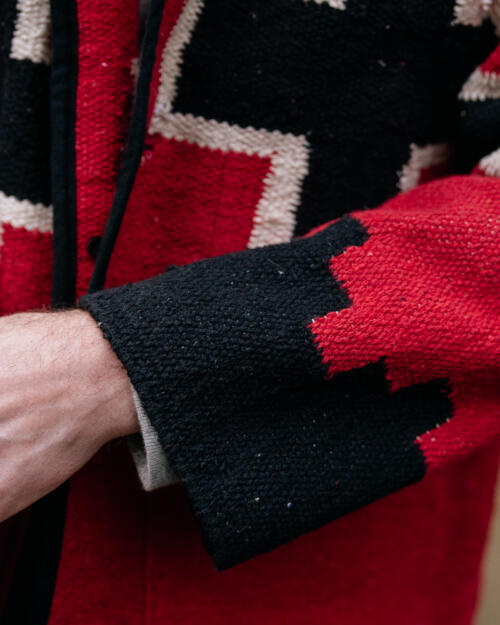
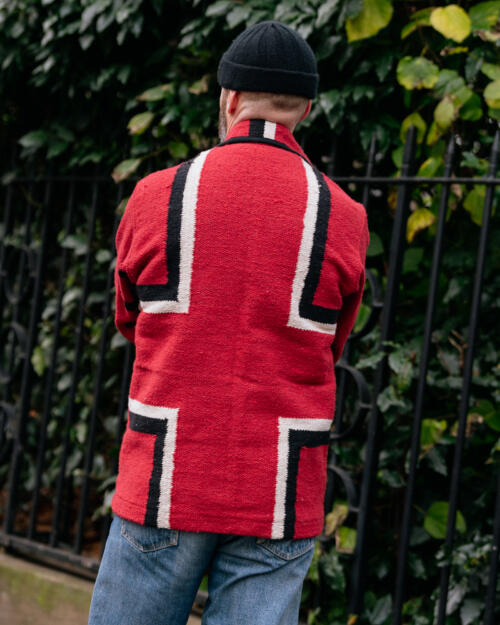
The jacket should now be stronger than the original because the material isn’t held together by a single seam, but almost made like a solid piece. And of course other repairs can be done in the future.
I’m pleased, because I rather like the design. I don’t wear many things that are this bold, but in these colours and this simple make, I like it. I find the way the sleeves are finished in blocks of black particularly pleasing, as well as the symmetry of the crosses.
It’s stiff to wear, but not uncomfortably so. I think anyone that has worn heavier, traditional tailoring or workwear fabrics would find it wearable. And touches like that in-breast pocket make it more functional.
I’ve shown it here with my vintage Levi’s and a Real McCoy’s sweatshirt, which are pretty standard for me and probably the default when trying out bolder pieces on top. You could even say – one for long-time PS readers – that it’s a workwear equivalent of The Italian Background.
The other clothes shown are a black PS watch cap, Alden snuff-suede boots on the Modified Last, and a white PS Tapered T-shirt.
David Claxton can be contacted for repair work on Instagram @claxies_official
